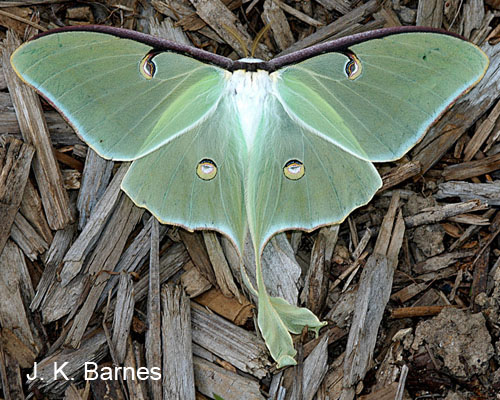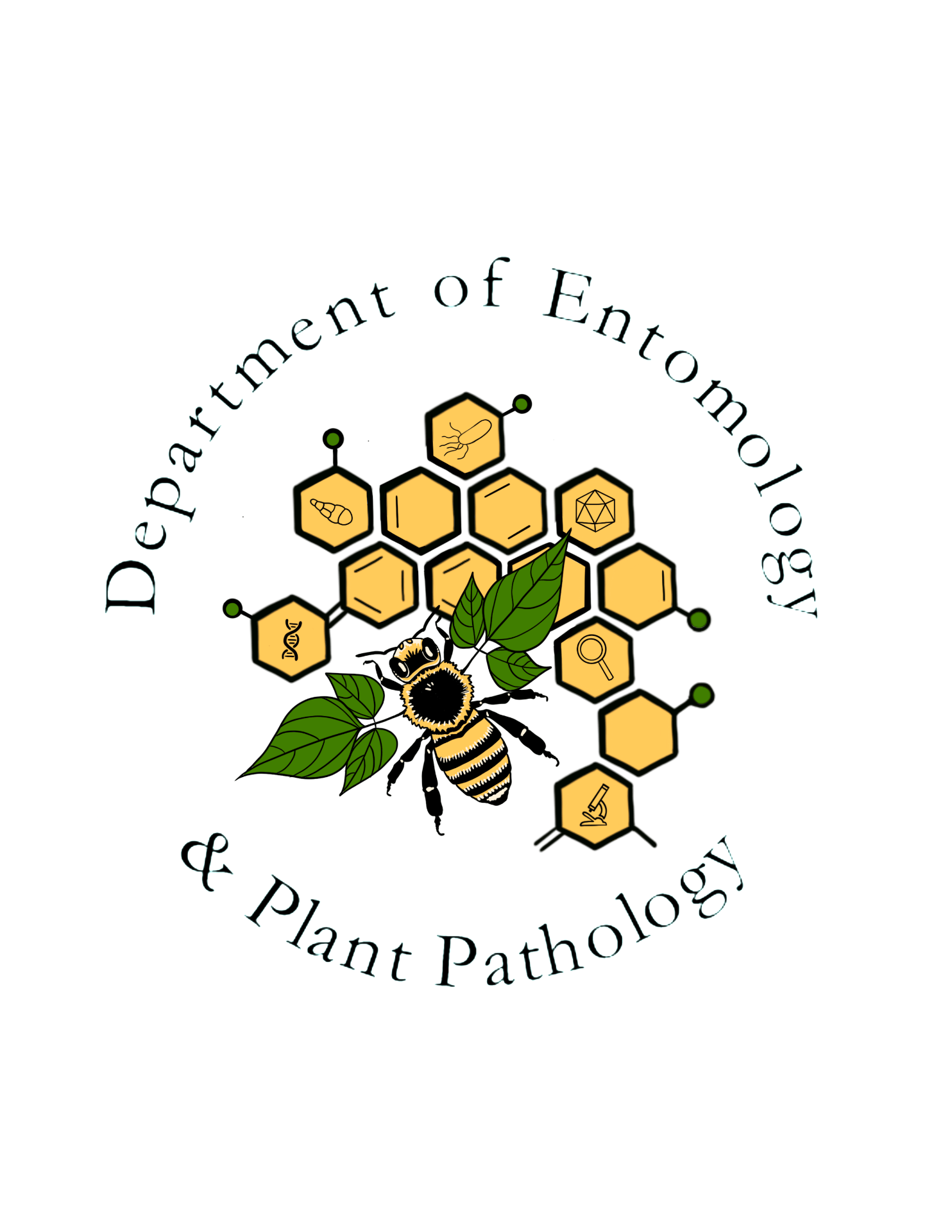Luna moth
Order: Lepidoptera
Family: Saturniidae
Genus and species: Actias luna (Linnaeus)

Adult luna moths are often seen flying around lights on spring and summer evenings in Arkansas. They normally emerge from their cocoons in the morning and mate at night, sometime after midnight. Females begin laying eggs on the underside of foliage of larval food plants the evening following mating. Larvae are fairly sedentary, actively wandering only when searching for a pupation site. In the northern part of the species’ range, larvae tend to feed primarily on white birch, although they have also been found on many other trees and shrubs, including ironwood, red and white oak, elm, trembling aspen, willow, sugar and red maple, black walnut, butternut, hickory, hazel, alder, basswood, beech, and cherry. In the South, hickory, walnut, sumac, persimmon, and sweet gum are preferred. The larva turns from light green to reddish brown just before it begins to spin its cocoon. Cocoons are often spun at the base of the food plant. Leaf material if often incorporated into the irregularly shaped, papery brown cocoons. The luna moth occurs from Nova Scotia to Florida, west to central Saskatchewan and eastern Nebraska, Kansas, and Texas. Northern populations have only one generation per year. In Arkansas there are probably at least three annual generations. Adults are somewhat variable in color, with spring individuals being more intensely blue-green than subsequent generations, which are more yellowish. Spring individuals also have reddish purple outer wing margins.
